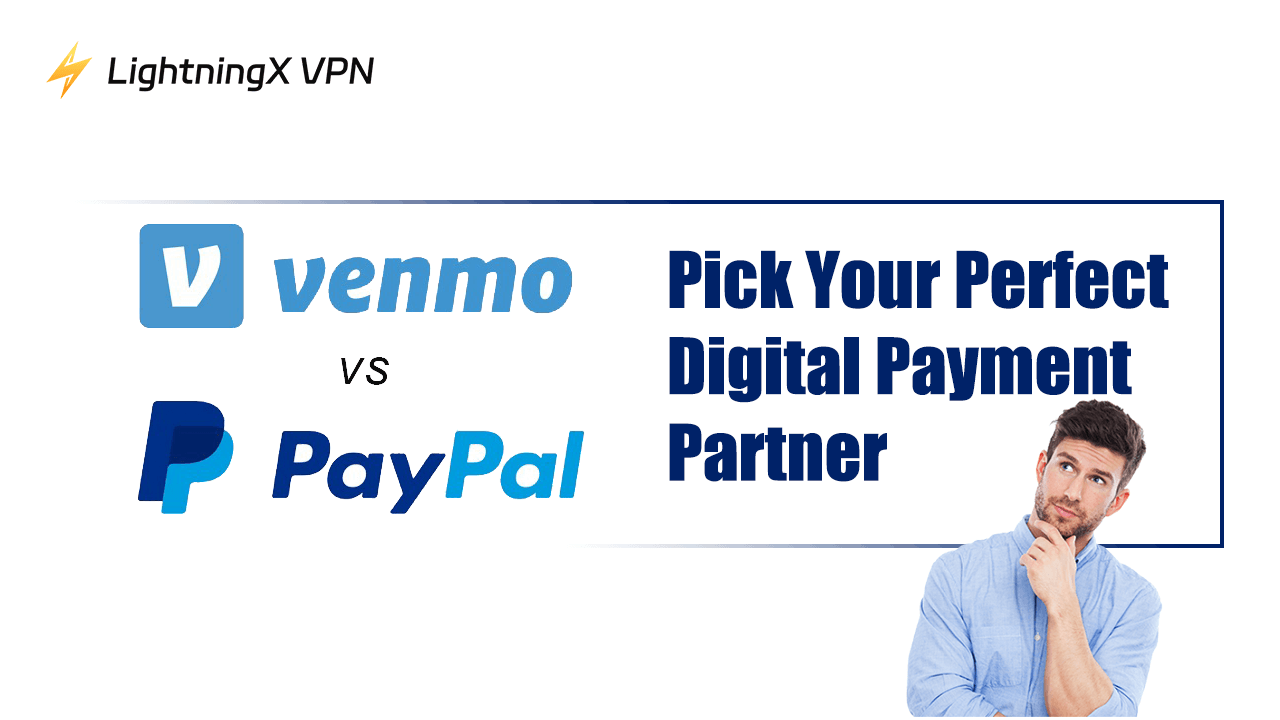As a small individual, a dramatic transformation has hit the way we manage our money. Gone are the ways of carrying cash or writing checks. Instead, our smartphones have become our wallets, and apps have been our preferred way to pay.
Among the many digital payment methods available, two platforms stand out prominently: PayPal and Venmo. What are the similarities and differences between them? This article will make a detailed comparison of Venmo and PayPal and help you decide which one suits your financial habits.
Venmo vs PayPal: Overview
PayPal emerged in the late 1990s during the early days of e-commerce, revolutionizing how people could pay online. It is a global digital payment platform with a broader scope.
PayPal supports both personal and business transactions, making it ideal for online shopping, invoicing, and international money transfers. With operations in over 200 markets, PayPal is a business giant in digital finance.
Pros:
- Versatile and suitable for personal and business use.
- Supports international payments in multiple currencies.
- Comprehensive buyer and seller protections.
Cons:
- Higher fees for certain transactions.
- Interface may feel overwhelming for casual users.
- Some features, like refunds, can take time to process.
Venmo entered the payment market in 2009 with a fresh approach – making payments social and fun. It is a peer-to-peer (P2P) payment service, designed primarily for personal transactions within the United States.
It’s especially popular among younger users for its ease of use and social features, allowing friends to split bills or pay rent with a touch of personality.
Pros:
- Easy to use for everyday transactions.
- Social feed adds a unique, fun element.
- Free for most basic transfers.
Cons:
- Limited to U.S. users.
- Not ideal for business transactions or international payments.
- Limited buyer protection.
Both platforms have since evolved significantly, adapting to changing consumer needs and technological capabilities.
Venmo and PayPal are part of the same company since PayPal acquired Venmo in 2014. Both require users to create accounts and link their bank accounts or cards. They offer mobile apps for easy transactions on iOS and Android.
Both platforms prioritize security with encryption and two-factor authentication. They support peer-to-peer payments and integrate with online merchants for easy shopping. Users can also track their transaction histories on both platforms.
Venmo vs PayPal: Varied Features
Both Venmo and PayPal have their unique strengths and features. While Venmo excels in social interactions and is easy to use for everyday transactions, PayPal offers a comprehensive suite of tools for both personal and business needs. Let’s explore the varied features that set them apart.
1. Target Audience and Use Cases
Venmo: Best for casual, everyday transactions between friends and family. Its social feed allows users to add emojis or notes to payments, making financial interactions fun and engaging. For example, you can split dinner bills, share rent, or gift money on special occasions.
PayPal: Designed for both personal and professional use, PayPal is ideal for online purchases, business payments, and cross-border transactions. For example, you can buy items online, receive freelance payments, or manage e-commerce stores.
2. Transaction Types
Venmo focuses on P2P payments and supports some merchant transactions within the U.S. It’s not suited for international payments.
PayPal offers a variety of transactions, including P2P transfers, e-commerce purchases, subscription services, and international money transfers.
3. Fees
When you use Venmo, transferring money is usually free if you fund the transfer with a linked bank account, debit card, or Venmo balance. However, if you’re using a credit card, there’s a 3% fee.
If you need to transfer money to your bank account instantly, Venmo charges a 1.75% fee, with a minimum of $0.25 and a maximum of $25.
It’s generally free when you use PayPal for domestic transactions funded by your PayPal balance or a linked bank account. However, if you use a credit or debit card, there’s a 2.9% fee plus a fixed fee.
For international payments, additional fees are incurred, which depend on the currency and the country involved.
4. Security
Both platforms prioritize security, but they cater to different needs:
Venmo uses encryption and two-factor authentication to protect user data, ensuring that your transactions are secure. However, it’s important to note that Venmo’s purchase protection is quite limited, which makes it less ideal for e-commerce and online shopping.
On the other hand, PayPal goes a step further with advanced fraud protection and comprehensive buyer and seller protections, as long as real-time transaction monitoring.
This makes PayPal a safer choice for buying and selling goods and services, as it helps ensure secure transactions and offers better safeguards against fraud.
No matter which one you choose, it’s a wise choice to use a VPN for stronger security. A VPN adds an extra layer of encryption, protecting your financial data from hackers and ensuring your privacy online. For example, LightningX VPN uses AES-256-GCM algorithms to encrypt your VPN tunnel.
Also, if you want to use Venmo outside the U.S., LightningX VPN provides many American servers for you to get an American IP address. You can enjoy Venmo social feeds with LightningX VPN.
LightningX VPN is fast, reliable, and easy to use, making it the perfect companion for your digital payment activities. Stay secure while you manage your money online!
5. Accessibility
Venmo offers a mobile app for iOS and Android users, making it convenient to handle transactions on smartphones. Nevertheless, it’s only available within the United States, which means international users cannot take advantage of its services.
Conversely, PayPal provides more versatility. It can be accessed through mobile apps, and desktop browsers, and is integrated into many online platforms. Moreover, PayPal operates in over 200 markets and supports multiple currencies, which makes it a strong choice for global transactions.
Which One Should You Choose?
Your choice between Venmo and PayPal depends on your specific needs.
Choose Venmo if: You’re looking for a simple, social way to split bills or send money to friends and you’re based in the U.S. and don’t need international payment features.
Choose PayPal if: You need a global payment platform with robust business tools and value buyer and seller protection for online purchases. Plus, if you frequently deal with international transactions or e-commerce, PayPal is better.
Alternatively, if you want more payment options, you can read our blog: PayPal Alternatives.
Conclusion
Both Venmo and PayPal are excellent payment platforms, but they serve different purposes. This article makes a detailed comparison between Venmo and PayPal.
Venmo’s simplicity and social features make it ideal for personal, casual transactions, while PayPal’s versatility and global reach cater to both individuals and businesses. Hope this article can help you make an informed choice that aligns with your financial needs.


















